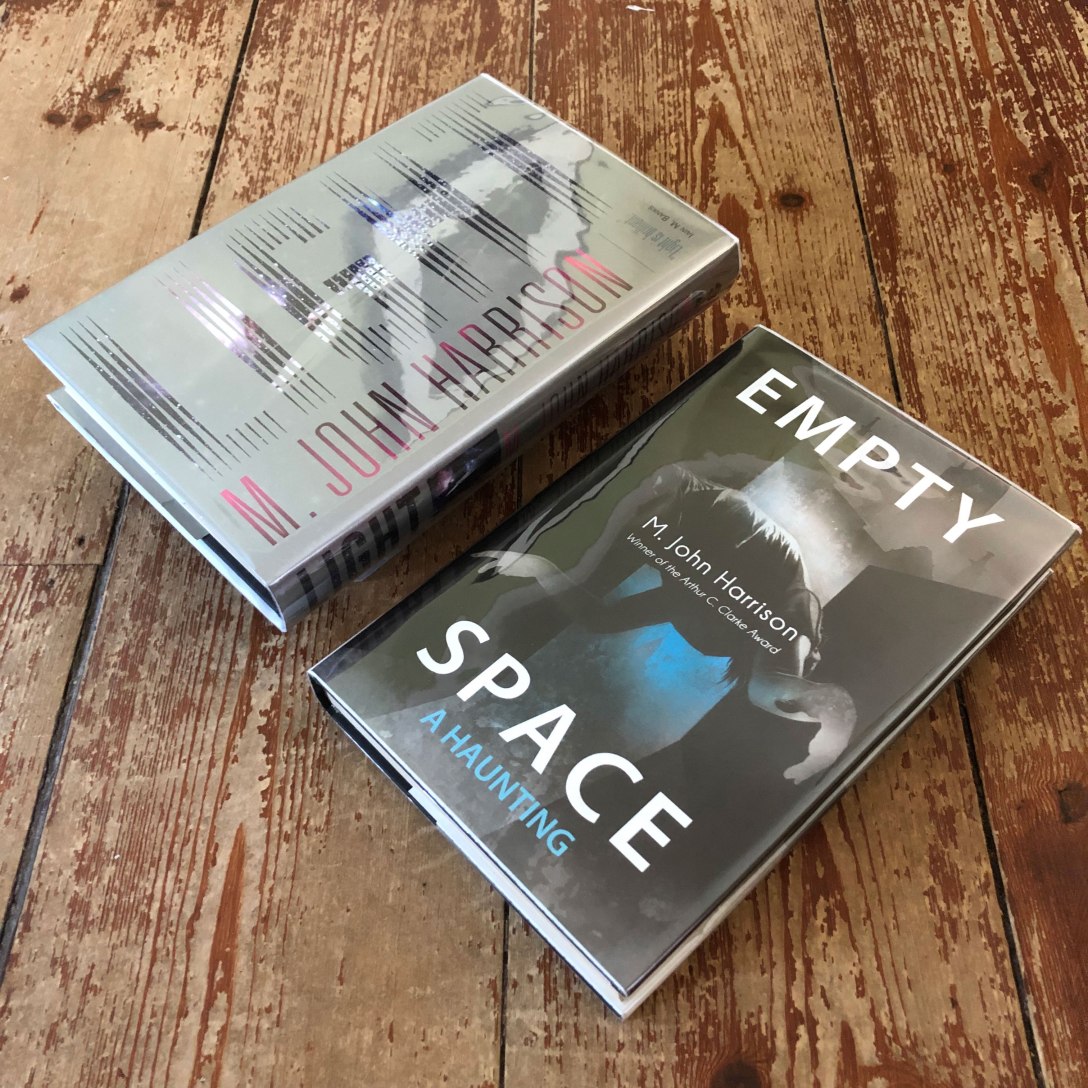Light
Iain Banks, master of the modern space opera, apparently once said to M. John Harrison while discussing SF over a drink or two, “Mike, your problem is that you don’t know how to have fun.” Light is the exuberant riposte to Banks’ blithe remark, proving without doubt that Harrison not only knows how to have fun but in the process write a fiercely intelligent and wildly imaginative SF novel.
Light features three separate plot threads that weave around each other, bound by an intricate web of recurring images and themes. Three psychological portraits of traumatised, damaged characters set in 1999 and 2400 bound together by quantum physics, family ties and the mysterious and unknowable Kefahuchi Tract.
Nova Swing
Set in the universe of Light, Nova Swing is a very different novel to its exuberant precursor. Drawing on detective noir and riffing on both the Strugatsky Brothers’ Roadside Picnic and Andrei Tarkovsky’s spiritual spin on the same material, Stalker, Nova Swing deals with loss, the burden of the past and transformation. Set in the city of Saudade, the main characters are psychologically drawn to the mysterious ‘event site’, a cordoned-off zone within the city, where a piece of the Kefahuchi Tract has invaded, and where physics and reality are out of whack.
The transformative power the event site has over the main characters, both physically, with passages of unnervingly weird body horror, and psychologically makes this the influential precursor to Jeff Vandermeer’s Southern Reach trilogy.
Empty Space
“A long curved wave of bleakness raced towards Ed Chianese’s shore: the Alcubiere break, which is the black surf gravity; which is the coiled swell of empty space that sucks into itself one significant event of your life after another, and if you don’t move on you’re left there gazing out across nothing at nothing much again.”
The third Kefahuchi Tract novel and the one that binds Light and Nova Swing together. In this, the best of the three, Harrison, the grand magician, has all his plates spinning at once. The structure echoes the tri-part narrative of Light, gradually interweaving the plot threads until the intense, deranged finale. Minor characters from the previous novels are placed centre stage. The chapters dealing with Anna Waterman’s life in the suburbs of London butt up and jar against the retro-future science fiction of life in the 2400s under the glare and weird physics of the Kefahuchi Tract and creates a powerful collage-type effect. The defamiliarisation of the quotidian and mundane, transformed into the visionary. I lose myself in the gnarly physicality of Harrison’s sentences. The writing is almost concrete, a physical rendering of the world, or more precisely, a writing concerned with how the world feels. Mind blown.


